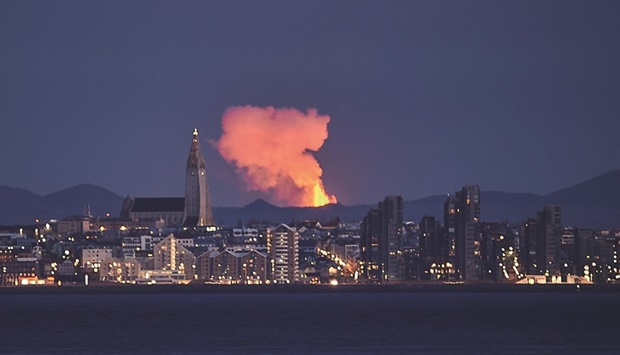The eruption of a volcano in Iceland, which drew hundreds of thousands of tourists and was the longest in 50 years, has been declared officially over, the authorities said yesterday.
“It’s been three months since lava last came out, so this eruption is now considered over,” Bryndis Yr Tisladottir, specialist in natural hazards at the Icelandic Meteorological Institute (IMO), told AFP.
However, the agency, which monitors volcanic activity, nevertheless called on hikers to be cautious, and it will continue to monitor the area.
The eruption of lava began on March 19 on the outskirts of Mount Fagradalsfjall, about 30km (20 miles) southwest of the capital Reykjavik.
Lava had not flowed for eight centuries on the Reykjanes peninsula, and for nearly 6,000 years where the eruption occurred, according to volcanologists.
However, this eruption, the sixth in Iceland in the last 20 years, became the longest recorded in half a century as it continued to spew lava for six months.
Just after claiming that record on September 18, the lava stopped emerging – but only after more than 140mn cubic metres of magma had spilled into the valleys of Geldingadalur.
Relatively easy to access, the eruption became a major tourist attraction, with more than 350,000 visitors, according to the Icelandic Tourist Board.
And the experts have warned that further eruptions in the area are possible.
“History tells us that volcanic activity there occurs in cycles,” the IMO said.
Last week, the institute revised down the risk of an eruption of another Icelandic volcano, Grimsvotn, having raised the eruption alert level to “orange” two weeks ago.
The most active volcano in Iceland, erupting on average every five to 10 years, it sits in a more inaccessible area in the centre of the island nation, under a huge glacier.
“There’s still a chance but it’s lower,” Tisladottir told AFP.

This photo taken on May 5 shows the Reykjavik skyline with the glow from lava coming out of a fissure near the Fagradalsfjall, on the Reykjanes Peninsula. After three months of interruption, the eruption of the volcano near Reykjavik is considered officially over, authorities said yesterday.
